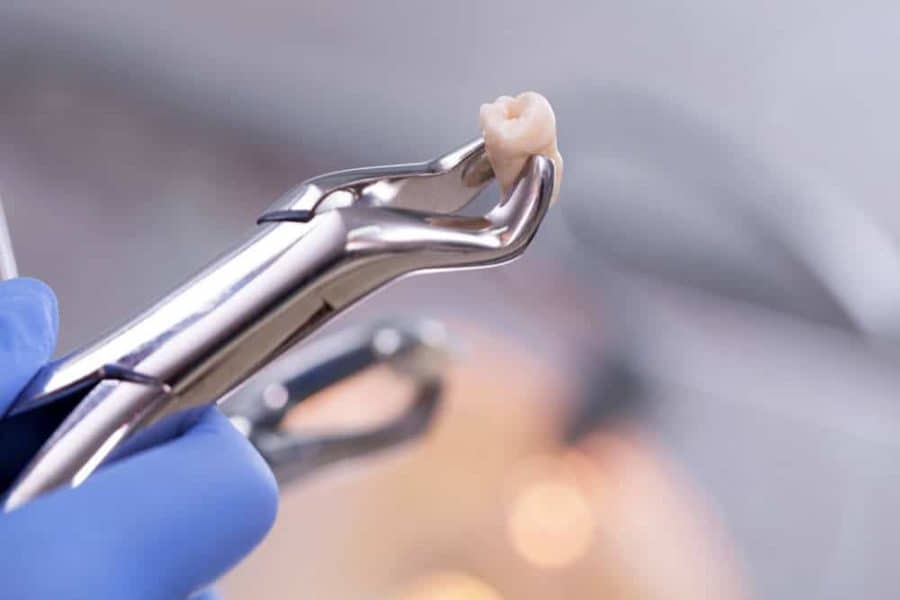Teens and young adults who receive their initial opioid prescriptions from their dentists or oral surgeons are at increased risk for opioid addiction in the following year, a study from the Stanford University School of Medicine has found.
The study, which was published Dec. 3 in JAMA Internal Medicine, examined opioid use and abuse in a large group of privately insured patients from across the United States. Among nearly 15,000 young people who received initial opioid prescriptions from their dentists in 2015, 6.8 percent had additional opioids prescribed between 90 and 365 days later, and 5.8 percent were diagnosed with opioid abuse during the year after the initial prescription. In a comparison group that did not receive an opioid prescription from their dentists, 0.1 percent got another opioid prescription and 0.4 percent were diagnosed with opioid abuse over the same period.
The researchers began the study to explore the risks of wisdom tooth extraction, a common elective dental surgery in teenagers and young adults. Many patients are prescribed opioids to manage pain after wisdom tooth removal.
“This work raises two really important related but separate questions: Do we need opioids, and do we need the procedure?” said the study’s lead author, Alan Schroeder, MD, clinical professor of pediatrics at Stanford.
Beneficial procedure?
Though extremely common, wisdom tooth extractions are not well-studied, and the balance of risks and benefits is not clear, Schroeder said. His overall research focus is “safely doing less” — trying to identify common interventions in pediatrics that may have unfavorable risk-benefit profiles and asking if they could be simplified or eliminated for patient safety. Removal of disease-free wisdom teeth has not been studied thoroughly enough to determine whether it benefits patients, according to a 2016 Cochrane review of the subject.
The research team used a database that contains de-identified information on millions of privately insured patients from across the United States. The researchers focused on patients who were 16 to 25 years old in 2015, the age group in which wisdom tooth extractions are typically performed. The database included 754,002 people of these ages who were enrolled in health insurance for the entire year. Of those, 97,462 (13 percent) received at least one opioid prescription; 30 percent of the opioid prescriptions came from dental practitioners.
To zero in on patients who had probably not had prior opioid exposure and who were probably receiving the drugs for elective dental procedures, the researchers excluded patients who had been hospitalized during the week before they were prescribed dental opioids, as well as all patients who had received other opioid prescriptions or been diagnosed with opioid abuse in the year before getting a prescription from a dentist. This left 14,888 young people who got an initial opioid prescription in 2015 from a dental practitioner. The median number of pills prescribed was 20.
Each person in the group was matched with two control individuals who did not receive dental opioid prescriptions that year. Each control patient was randomly assigned a start date, which the researchers referred to as their phantom prescription date, during 2015 for the study’s one-year follow-up period.
The researchers checked whether patients in either group got subsequent opioid prescriptions 90 to 365 days after the initial or phantom prescription date. They also examined whether patients’ records during the year included diagnostic codes for opioid abuse.
Tracking the opioid use
Seventy-five percent of the opioid prescriptions were for hydrocodone-acetaminophen, commonly known by the brand names Lortab, Norco or Vicodin. In the 12 months prior to the real or phantom opioid prescription date, about 3 percent of subjects in each group had been diagnosed with substance abuse of nonopioid substances.
Compared with patients in the control group, the group that received dental opioids had significantly greater rates of continuing opioid use and abuse.
“Almost 7 percent of these patients had new, persistent use at least three months after the initial prescription and almost 6 percent had an opioid abuse diagnosis,” Schroeder said. “That’s pretty alarming.”
The youngest patients, ages 16 to 18, were significantly more likely to have persistent opioid use than the oldest patients, ages 22 to 25. Female patients were more likely to have persistent opioid use, while patients of Asian race/ethnicity were less likely to have persistent use.
Follow-up research is needed to determine whether opioids are the safest method of treating pain from wisdom tooth extractions, and whether the extractions themselves are always necessary, Schroeder said. “I think we should ask, No. 1, Why are we prescribing such a high quantity of opioids so frequently? And No. 2, Are all the procedures that are driving these opioid prescriptions necessary?” he said.
Schroeder is a member of the Stanford Maternal & Child Health Research Institute.
Other Stanford authors of the research are senior author K.T. Park, MD, formerly an associate professor of pediatrics; Melody Dehghan, research data analyst; and senior biostatistician Jason Bentley, PhD. A scientist from the University of California-San Francisco also participated in the study.
The research was funded by Stanford’s Department of Pediatrics.
If our reporting has informed or inspired you, please consider making a donation. Every contribution, no matter the size, empowers us to continue delivering accurate, engaging, and trustworthy science and medical news. Independent journalism requires time, effort, and resources—your support ensures we can keep uncovering the stories that matter most to you.
Join us in making knowledge accessible and impactful. Thank you for standing with us!

